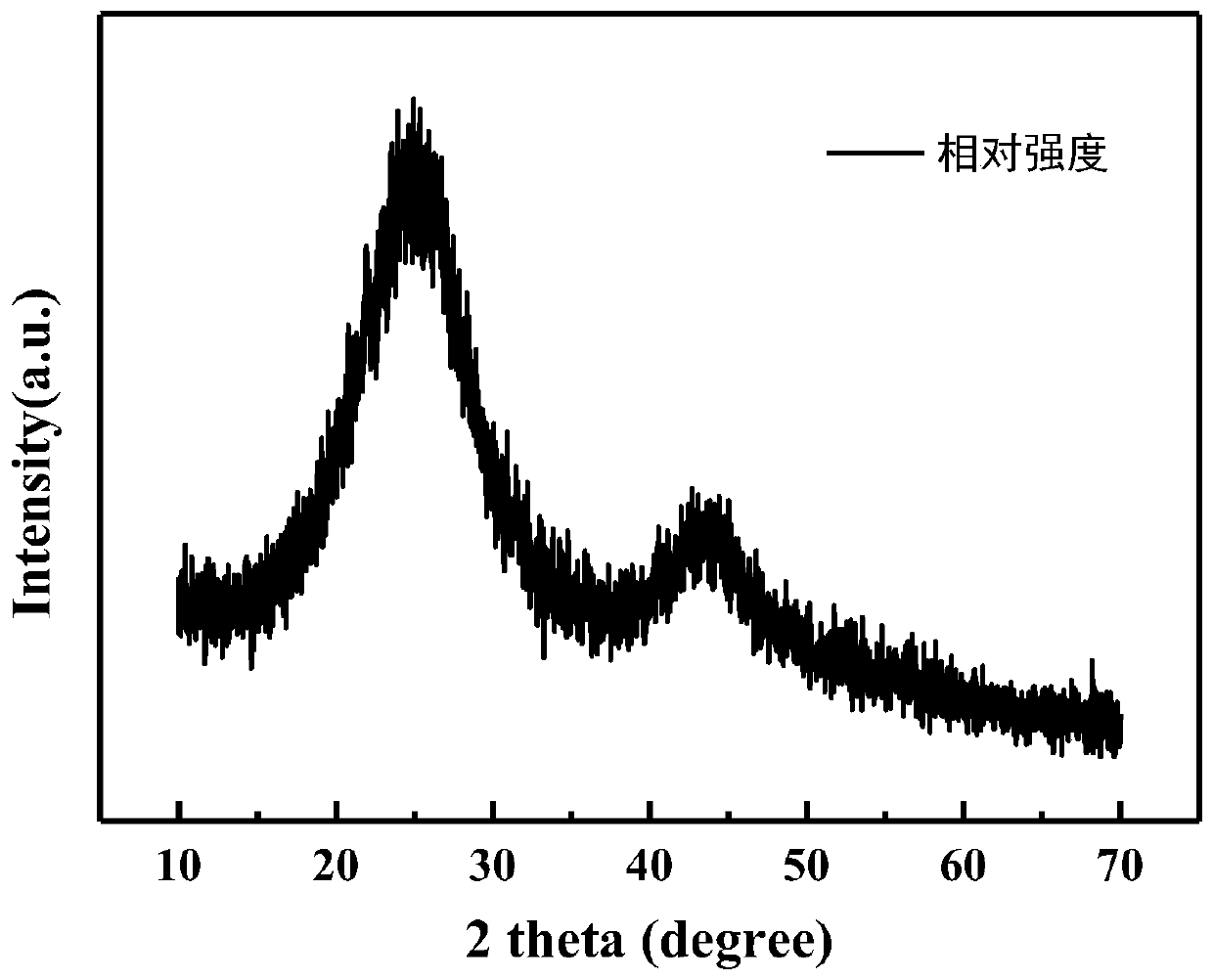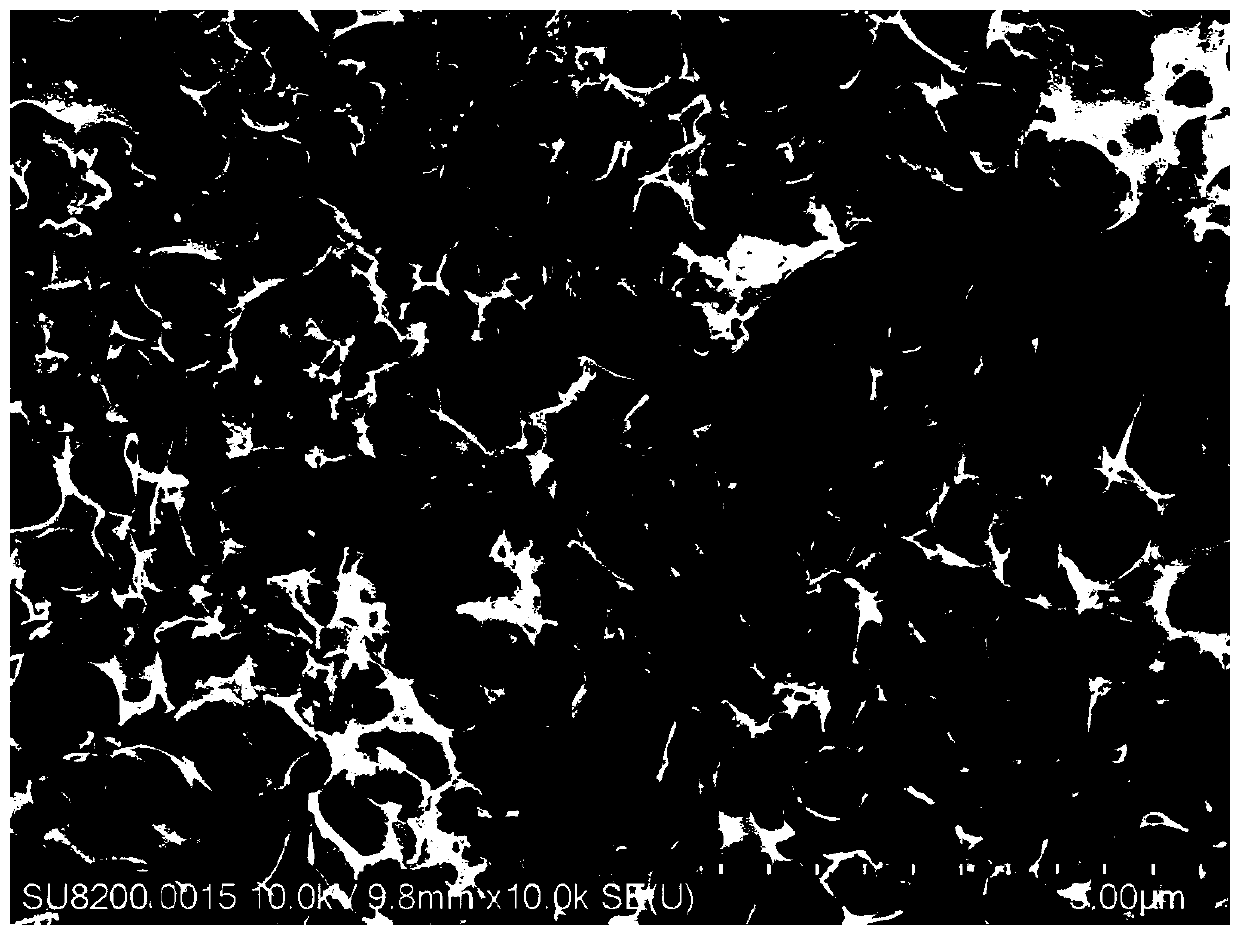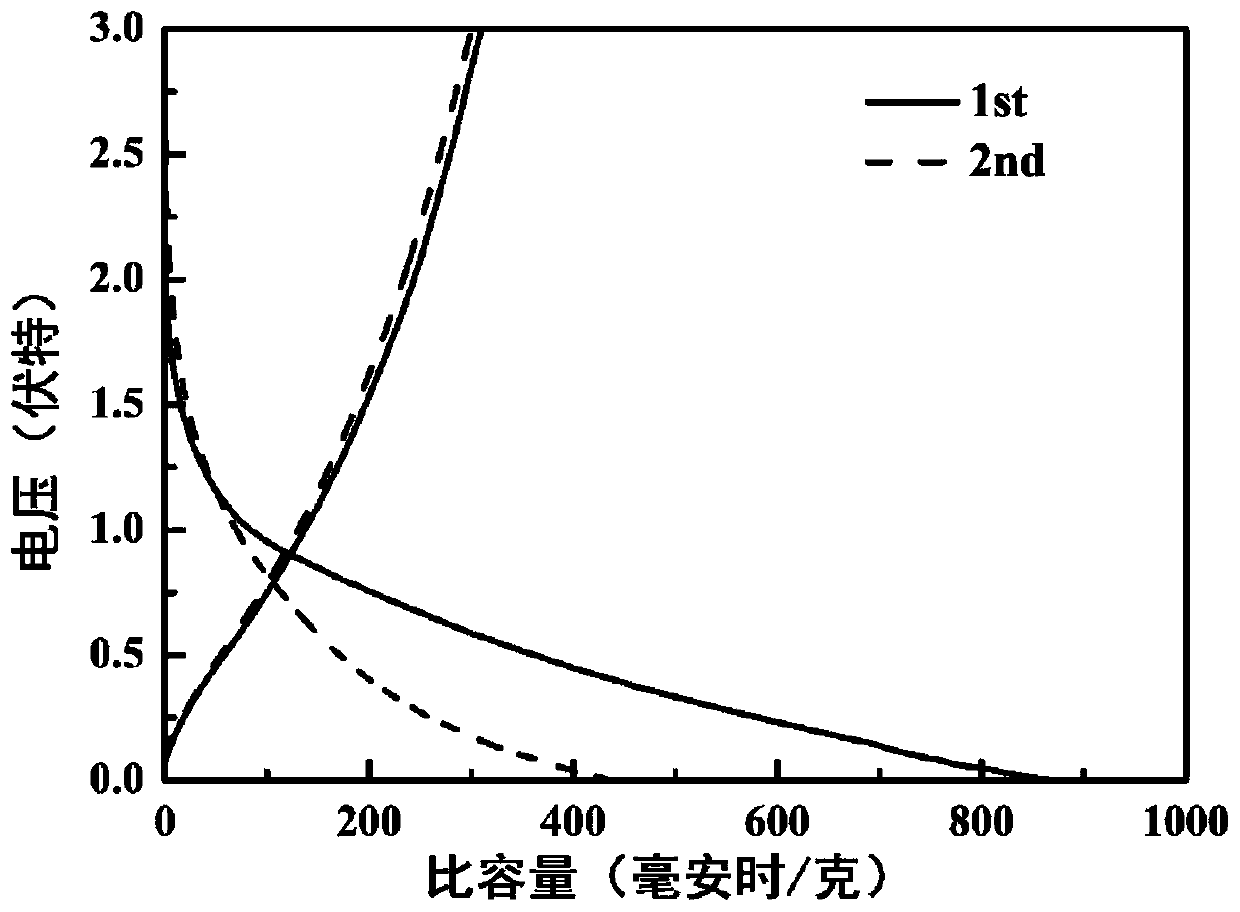Method for using biomass porous carbon as potassium ion battery cathode
A battery anode and potassium ion technology, applied in battery electrodes, secondary batteries, circuits, etc., can solve the problems of difficulty in controlling the synthesis morphology, restricting the application of potassium ion battery anode materials, etc., and achieve easy expansion of production and excellent cycle stability. , the effect of excellent electrochemical performance
- Summary
- Abstract
- Description
- Claims
- Application Information
AI Technical Summary
Problems solved by technology
Method used
Image
Examples
Embodiment 1
[0035] Example 1: Preparation and structural characterization of biomass three-dimensional hierarchical porous carbon materials
[0036] (1) The processing of biomass raw materials: the blue-green algae is processed into a powder with a particle size of 400 meshes to obtain the blue-green algae powder;
[0037] (2) Mixing and grinding: ball mill 8g of cyanobacteria powder with 16g of specific salt (ingredients: 8g of sodium chloride, 8g of potassium chloride) particles at a speed of 450 rpm for 4 hours to obtain a precursor;
[0038] (3) Carbonization: put the precursor obtained in step (2) in a corundum crucible, and cover it with 10g of specific salt (ingredients: 5g of sodium chloride, 5g of potassium chloride); place the crucible in a muffle furnace, Under the condition of no gas protection, the temperature was raised to 800°C at a rate of 5°C / min for 3 hours, and the carbonized product was obtained by cooling to room temperature with the furnace.
[0039] (4) Impurity re...
Embodiment 2
[0045] (1) Treatment of biomass raw materials: wash and dry the tea leaves, and pulverize them into powders with a particle size of 400 mesh to obtain tea powder.
[0046] (2) Mixing and grinding: 8 g of cyanobacteria powder and 16 g of mixed salt (8 g of sodium chloride, 8 g of potassium chloride) particles were ball milled at a speed of 450 rpm for 4 hours to obtain a precursor.
[0047] (3) Carbonization: the precursor obtained in step (2) is placed in a corundum crucible, and 10g of mixed salt (sodium chloride 5g, potassium chloride 5g) is covered on it, and the crucible is placed in a muffle furnace. Under the condition of gas protection, the temperature was raised to 800°C at a rate of 5°C / min and kept for 3 hours, and then cooled to room temperature with the furnace to obtain a carbonized product.
[0048] (4) Impurity removal: After the carbonized product is washed and filtered once with dilute hydrochloric acid, it is washed repeatedly with deionized water, filtered w...
Embodiment 3
[0051] (1) Treatment of biomass raw materials: wash and dry the peanut shells, and crush them into peanut shell powder with a particle size of 800 mesh.
[0052] (2) Mixed grinding: 8 g of peanut shell powder and 16 g of mixed salt (8 g of sodium chloride, 8 g of potassium chloride) particles were ball milled at a speed of 450 rpm for 4 hours to obtain a precursor.
[0053] (3) Carbonization: the precursor obtained in step (2) is placed in a corundum crucible, and 10g of mixed salt (sodium chloride 5g, potassium chloride 5g) is covered on it, and the crucible is placed in a muffle furnace. Under the condition of gas protection, the temperature was raised to 800°C at a rate of 5°C / min and kept for 3 hours, and then cooled to room temperature with the furnace to obtain a carbonized product.
[0054] (4) Impurity removal: After the carbonized product is washed and filtered once with dilute hydrochloric acid, it is washed repeatedly with deionized water, filtered with a Buchner fu...
PUM
 Login to View More
Login to View More Abstract
Description
Claims
Application Information
 Login to View More
Login to View More - R&D
- Intellectual Property
- Life Sciences
- Materials
- Tech Scout
- Unparalleled Data Quality
- Higher Quality Content
- 60% Fewer Hallucinations
Browse by: Latest US Patents, China's latest patents, Technical Efficacy Thesaurus, Application Domain, Technology Topic, Popular Technical Reports.
© 2025 PatSnap. All rights reserved.Legal|Privacy policy|Modern Slavery Act Transparency Statement|Sitemap|About US| Contact US: help@patsnap.com



